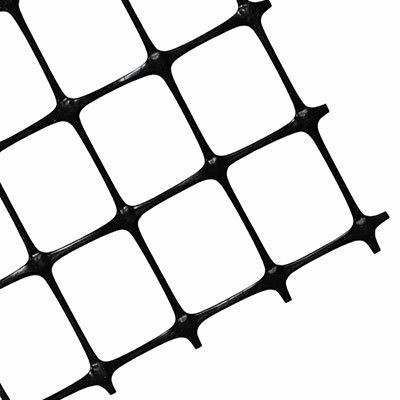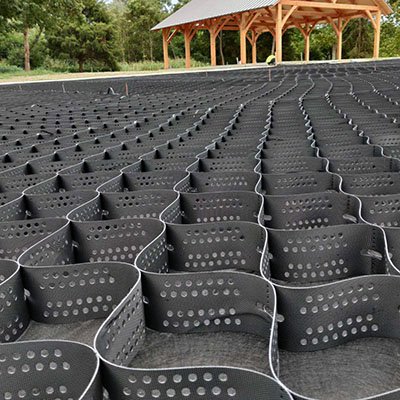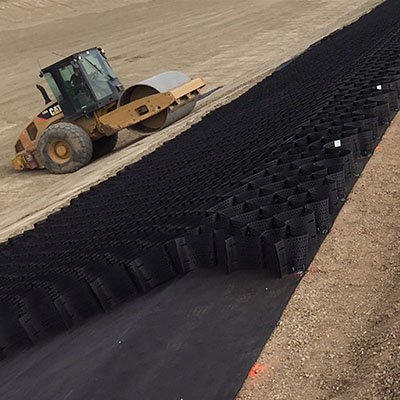Geogrids are polymeric products formed by joining intersecting ribs. They have large open spaces also known as “apertures”. The directions of the ribs are referred to as machine direction (MD), orientated in the direction of the manufacturing process or cross machine direction (CD) perpendicular to the machine direction ribs. Geogrids are mainly made from polymeric materials, typically polypropylene (PP), high density polyethylene (HDPE) and polyester (PET).
- Geogrids promote soil stabilization.
- Provide higher load bearing capacity.
- Geogrids are flexible in nature and are well known for their versatility.
- Geogrids have high durability which reduces maintenance cost.
- Geogrids are highly resistant to environmental influences.
- Easy to install which results in faster construction.

Types
Depending on the application, we have uniaxial geogrids(strength in one direction) and biaxial geogrids (strength in all directions)
Function
Fluid transmission, filtration, separation, and reinforcement.
Sectors
Construction industry.
Salient Features
- High tensile strength with low strain.
- Resistance to chemical and biological factors.
- Its flexibility helps it hold aggregates together.
- Higher rib height.
- Perfect rib width to withstand installation stressors
- High rib strength and junction strength.
- They are flexible and extremely versatile.
- Geogrids are highly durable yet have low maintenance costs.
Applications
- Use of geogrids speeds up construction.
- In the soil backfills, geogrids help with retaining wall constructions.
- Geogrids find utility in stabilizing soil below the foundation, particularly in shallow foundations.
- They help in pavement construction, either by improving the subgrade or reinforcement of the pavement base.
- Geogrids are in high demand in the construction industry as they are weather-resistant and cost-effective.
- Geogrids help in land optimization and promote soil stabilization.
- They are useful in bridge/railway abutments.
- Reinforcement of embankments over soft foundation.
For projects requiring enhanced protection, our PVC-Coated Geogrids deliver superior durability and longevity. These coated geogrids are well-suited for applications involving corrosive environments or high-stress conditions. Additionally, Geo Composite Geogrids offer a unique blend of geotextiles and geogrids, providing superior reinforcement in complex construction projects.
Uses
There are several major markets for geogrids. These are base reinforcement, earth retaining wall construction including veneer stabilization, the segmental retaining wall market, embankment reinforcement and pile cap platforms. Biaxial geogrids are primarily used in base reinforcement applications, while the uniaxial geogrids are often used in the other markets.



The base reinforcement market is just what the name implies. These are applications where engineers are trying to improve the performance of a gravel base over poor soils, trying to minimize the amount of gravel in the base course design, or increasing the life of the surface cover, concrete or asphalt. Geogrids are used under parking lots, airport runways, gravel construction roads, highways, dam levees and railroad tracks.
- Roads, Rail tracks and air fields
- Area stabilization
- Load transfer platforms
- Ground Reinforcement



